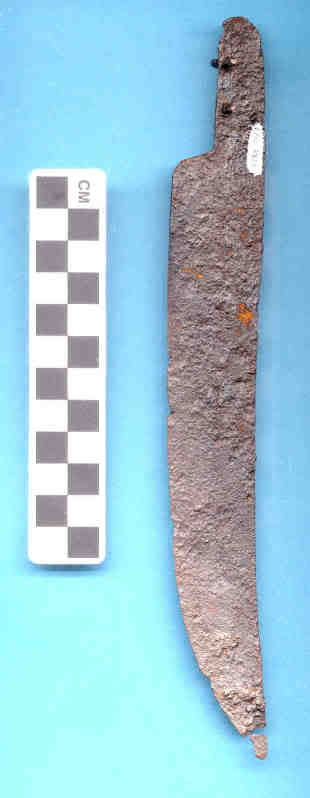Below are two repros by Ken Hamilton, who specializes in 18th century French stuff but makes the best English scalpers anywhere. No two are alike just as they were in the 18th century. The touch marks are original, which were likely Sheffield-made knock-offs of London commercial makers (based on the fact that London cutlers mainly dealt in small production fine cutlery rather than mass-produced, cheaper stuff for the trade). The stone-ground finish is correct for the period, the exotic wood for the handles (woods imported from Africa and other places) in this case is rose wood and cocobolo on the other. The gap created by the thin tang is filled with "cutler's cement" which is pitch mixed with brick dust as it was in the period. This also creates supports the pins in holding everything together.
The hatchet in the picture is made by Kyle Willyard of Old Dominion forge and is based on one found in George Neumann's "Swords and Blades of the American Revolution."
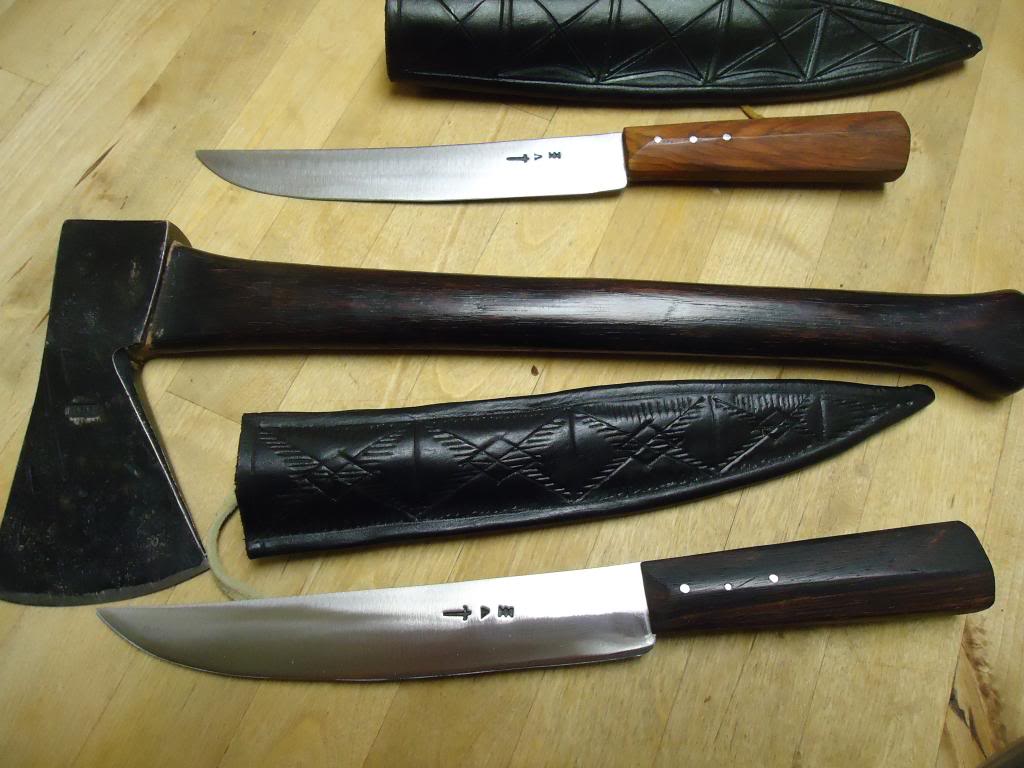
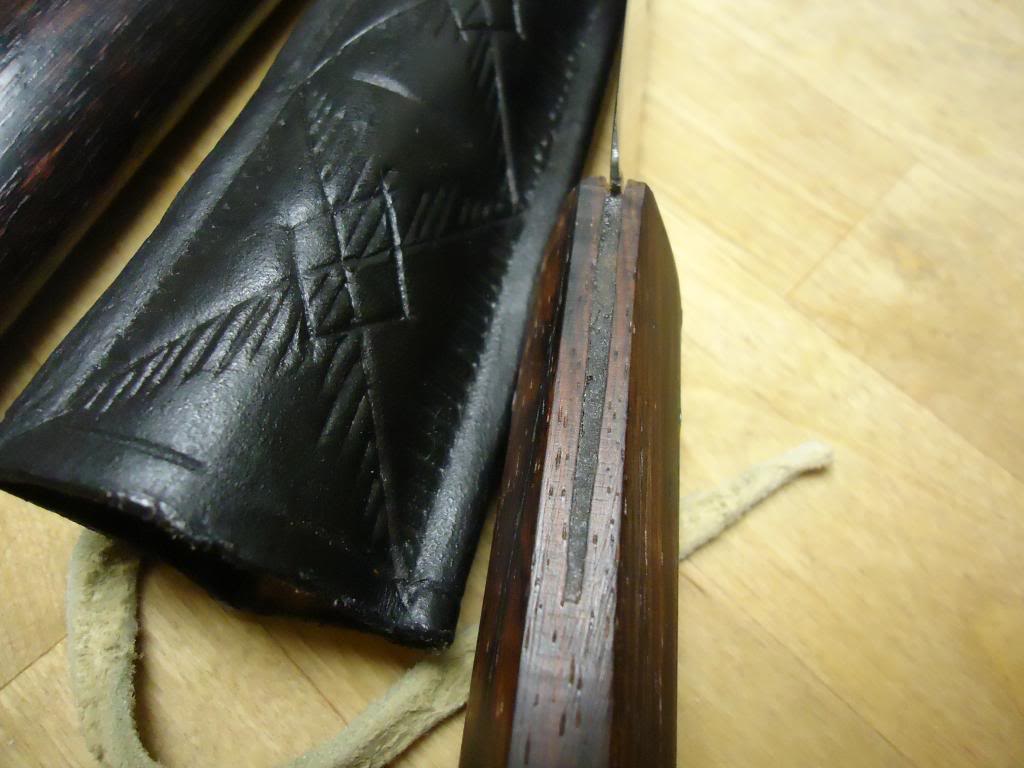
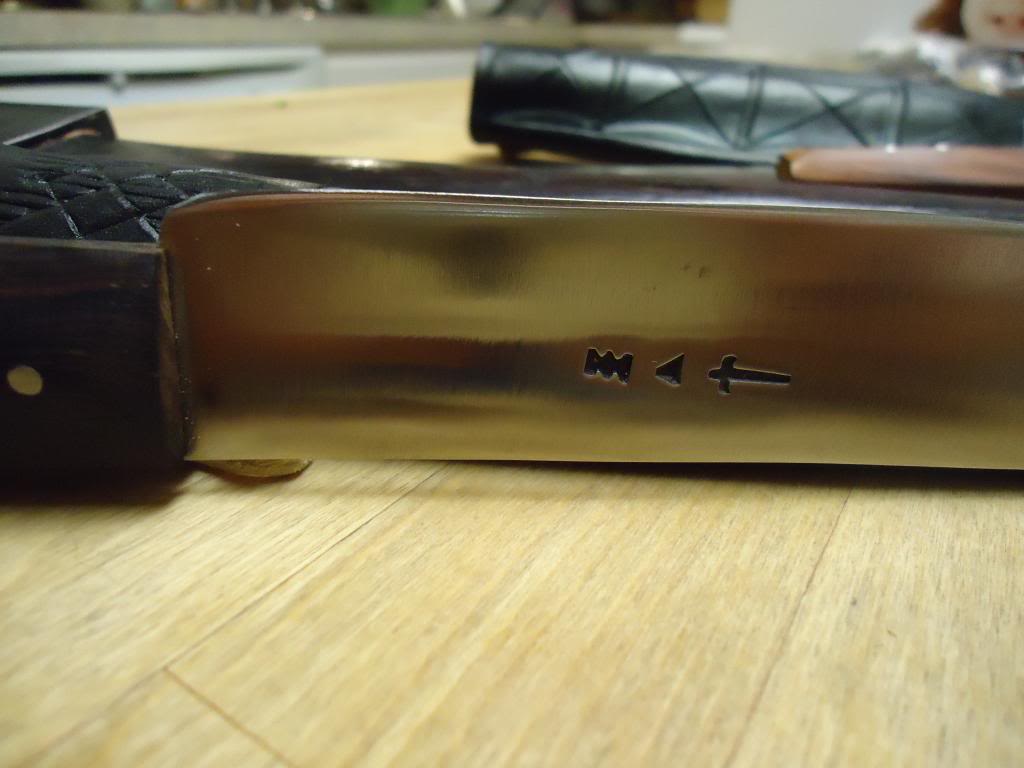
Original which still has the diamond-shaped handle:
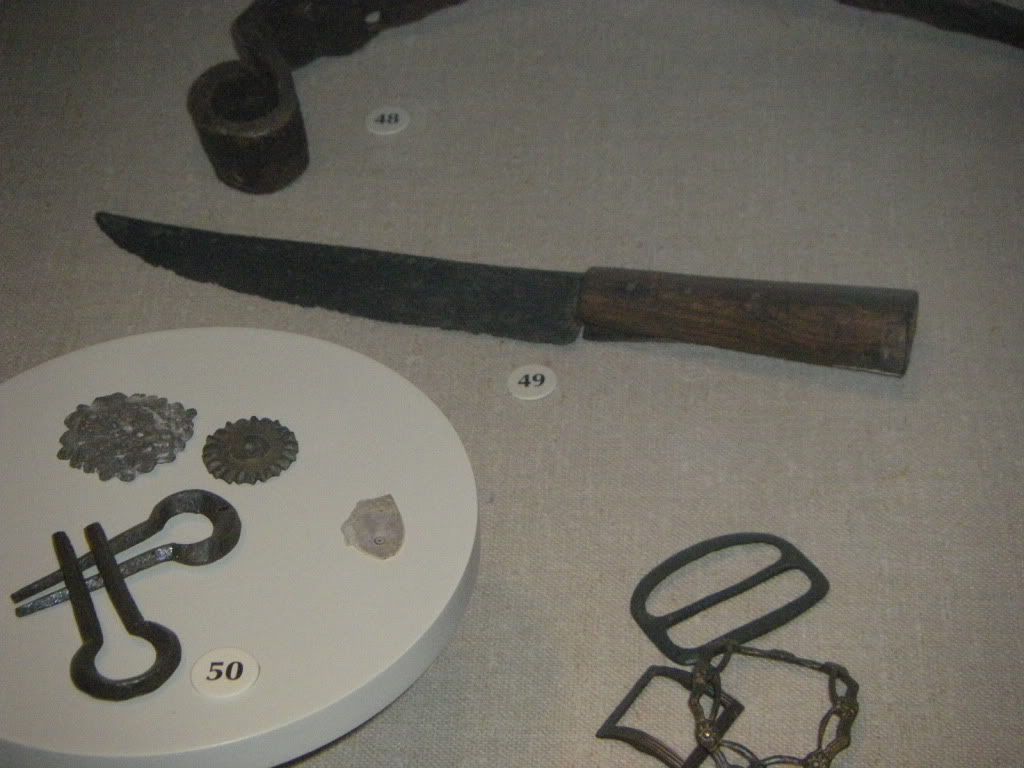
Another dug original blade, one of the myriad of these dug up all over 18th century Indian and military sites:

One more, for good measure:
